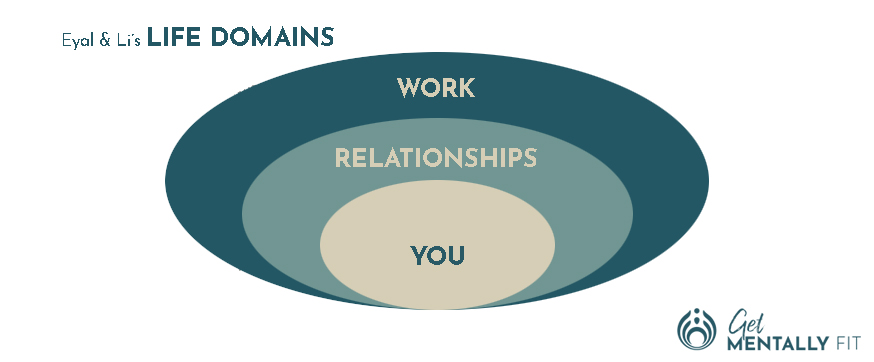Master Your Focus: Practical Strategies to Beat Distraction and Boost Performance
In today’s hyper-connected workplace, staying focused feels harder than ever. Emails, meetings, notifications, personal commitments, and traffic jams – distractions are constant. But as Nir Eyal reveals in his bestselling book Indistractable, the real battle isn’t with external interruptions – it’s with our internal triggers. The way we respond to discomfort and stress often determines whether we stay on track or get pulled into low-value, reactive tasks.
If you’re someone trying to create a high-performing, mentally fit team, this insight is a game-changer.
Previously, we unpacked Eyal’s advice on managing internal triggers – the restlessness, boredom, or overwhelm that drives us toward mindless scrolling or task-switching. Now, we’re diving into the second half of the equation: gaining traction. This means aligning your time and attention with what truly matters—to you, your role, and your people.
Why Your To-Do List Might Be Working Against You
Let’s be honest – traditional to-do lists can be overwhelming. Tasks accumulate, priorities shift, and unfinished work rolls over again and again, creating stress instead of progress. Eyal suggests flipping the script: start with your core values, not just your urgent tasks.
For leaders, that could mean dedicating time to strategic thinking, team development, or wellbeing check-ins – actions that reflect what kind of leader you want to be.
In Indistractable, Eyal and co-author Julie Li also warn against over-investing in one area of life – like constantly being “on” for work – at the cost of personal wellbeing and relationships. True productivity comes from balance, not burnout.
The Bottom Line: Distraction Is an Us Issue
If you’re serious about building a focused, engaged, and resilient team, it starts with how you manage your own attention. Ready to ditch the noise and lead yourself and others with clarity?
Explore the following actionable strategies to help you – and your team—become truly Indistractable.
👉 Watch this short video where Nir Eyal unpacks how to control your attention, boost workplace performance, and choose your life with intention.
Timeboxing: The Productivity Power Move Everyone Needs
In a world where distractions are just a click away, even the most focused person can struggle to stay on track. So how do high-performing professionals protect their time and mental energy?
One of the most powerful tools? Timeboxing – a simple but transformational productivity technique that helps people take back control of their day and align their actions with what matters most.
What Is Timeboxing (and Why Should we Care)?
Rather than relying on a never-ending to-do list, Timeboxing encourages you to schedule tasks into your calendar – down to the hour. It’s not about filling every minute; it’s about being intentional with your time.
As Nir Eyal and Julie Li explain in Indistractable, Timeboxing is all about setting an implementation intention –deciding what you’re going to do and when you’re going to do it. This approach helps leaders avoid decision fatigue, reduce distractions, and create space for deep, focused work.
Whether you’re an employee, leading a team, managing competing priorities, or trying to carve out space for strategic thinking, Timeboxing can help you stay grounded and purposeful.
Timeboxing in Action: Lead with Clarity Across All Areas of Life
So how do great leaders use Timeboxing in the real world? By creating structure across three key life domains:
You – Prioritise personal wellbeing, reflection, and growth to show up as your best self.
Relationships – Schedule time for meaningful connection with your team, family, and support network.
Work – Allocate focused blocks for high-impact work, leadership tasks, and deep thinking.
By designing your calendar around your values – not just your tasks – you create a balanced, energising rhythm that supports both performance and wellbeing.

1. YOU – Controlling the Inputs for Success
Particularly as a leader, your personal well-being directly impacts your effectiveness. Research shows that prioritising activities like exercise, sleep, reading, or mindfulness enhances mental clarity and resilience.
Case Study: The Executive Who Beat Burnout
Emma, a Senior Executive at a marketing firm, constantly felt drained by endless emails and late-night work sessions. She used Timeboxing to schedule non-negotiable self-care activities, such as 30-minute workouts, reading, and meditation. Over time, her focus improved, stress levels dropped, and she became a more present and decisive leader.
💡 Pro Tip: Schedule time for yourself first—before work obligations take over. Input is more controllable than outcome, so focus on what you can do, not just the results you want.
2. RELATIONSHIPS – Making Time for What Matters
Strong personal connections are crucial for long-term well-being. Yet, many professionals unintentionally neglect their closest relationships due to work demands. Research suggests that having close friendships improves mental health and longevity.
Case Study: The Tech Founder Who Rebuilt His Personal Life
James, the CEO of a fast-growing start-up, realised his marriage and friendships were suffering due to work. By Timeboxing weekly date nights and friend meetups, he repaired strained relationships and felt more fulfilled outside of work. As a result, he became more productive and less distracted during work hours, knowing he had dedicated personal time.
💡 Pro Tip: Time with family and friends isn’t just leisure – it’s an investment in your long-term happiness and mental resilience.
3. WORK – Syncing for Maximum Efficiency
With constant emails, meetings, and interruptions, work can feel chaotic. Timeboxing helps professionals structure their day around value-driven tasks instead of reactive work. Studies reveal that employees who work over 55 hours per week are actually less productive than those with structured schedules.
Case Study: The Manager Who Cut Her Workweek by 10 Hours
Lisa, a finance manager, struggled with endless meetings and distractions. She introduced Timeboxing and calendar syncing with her team, ensuring uninterrupted deep work sessions. Within weeks, she reduced overtime by 10 hours per week, improved team efficiency, and delivered projects faster with less stress.
💡 Pro Tip: Sync your calendar with colleagues to ensure dedicated work time. Frequent schedule adjustments keep everyone aligned and prevent last-minute disruptions

Unlock Your Full Potential with Expert Coaching
Mastering your time isn’t just about increasing productivity – it’s about unlocking your full potential. When you take control of your focus and align your actions with your values, you gain the clarity, confidence, and resilience to lead yourself and others effectively.
At Get Mentally Fit, we’ve helped hundreds of people transform their approach to work and life using science-backed strategies like Timeboxing. With expert coaching from Emily Johnson, our coaching psychologist, you’ll develop the skills to stay focused, reduce stress, and accelerate your professional growth.
🚀 Want to fast-track your success? Let’s start a conversation about how we can help you implement these strategies and achieve real, lasting results. Get in touch!


